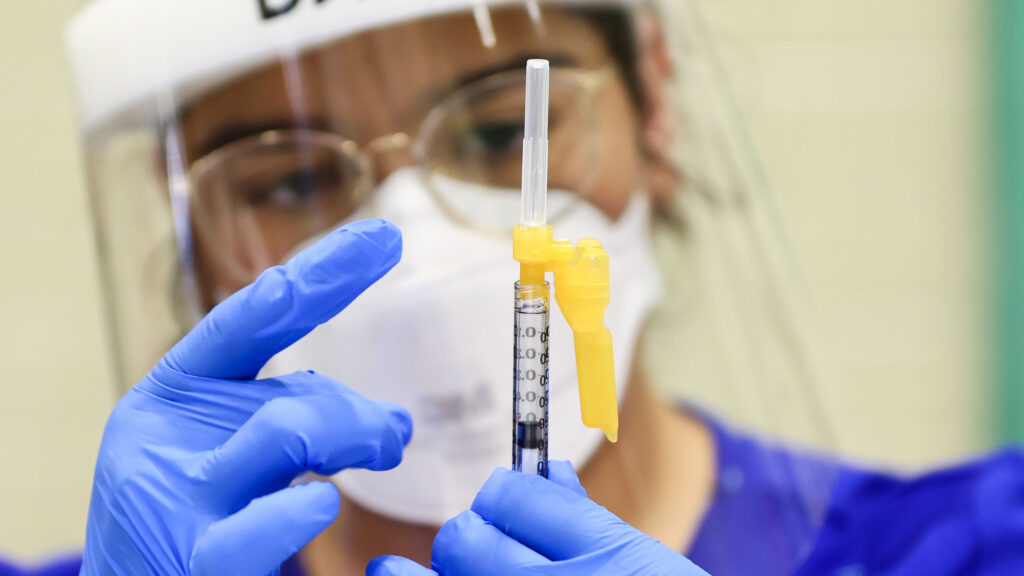Want to stay on top of the science and politics driving biotech today? Sign up to get our biotech newsletter in your inbox.
Good morning. Big news this morning, so let’s get straight into it.
advertisement
Here they are: the first Medicare-negotiated drug prices
Medicare this morning unveiled the results of the its first round of drug price bargaining. Here’s the list of negotiated prices for a 30-day supply that will start in 2026, and their discount from the 2023 list prices:
- Januvia (Merck) — $113.00 (79% discount)
- Fiasp/NovoLog (Novo) — $119.00 (76% discount)
- Farxiga (AstraZeneca) — $178.50 (68% discount)
- Enbrel (Amgen) — $2,355.00 (67% discount)
- Jardiance (Boehringer, Lilly) — $197.00 (66% discount)
- Stelara (J&J) — $4,695.00 (66%)
- Xarelto (J&J) — $197.00 (62%)
- Eliquis (Bristol Myers Squibb) — $231.00 (56%)
- Entresto (Novartis) — $295.00 (53%)
- Imbruvica (J&J, AbbVie) — $9,319.00 (38%)
The Biden administration released estimates that if the negotiated prices for all 10 drugs had been in effect in 2023, Medicare would have saved $6 billion overall, which would have been a 22% reduction. But administration officials said they couldn’t release drug-by-drug savings numbers.
Democrats are eager to tout savings from the negotiation progress in the lead-up to the November election — so much so that the Biden administration is announcing the prices two weeks before the legal deadline. But it’s tough to say precisely how much Medicare will save from these negotiations.
advertisement
Read more from STAT’s Rachel Cohrs Zhang.
Humira’s cost forces Medicare patients into an inconvenient workaround
When rheumatoid arthritis patients go on Medicare, many can no longer afford self-administered medications such as AbbVie’s Humira and Pfizer’s Xeljanz. That’s due to Medicare’s convoluted pricing of at-home prescription drugs.
As a result, these patients — as many as 40,000 chronically ill seniors — are having to resort to uncomfortable, time-consuming intravenous infusions. Not only is this inconvenient, but the switch can also cause side effects for some patients who had been stable for years on self-administered treatments like Humira.
Read more from STAT contributors Joseph Howlett and Andrea Tamayo.
Eli Lilly faces an age-old challenge
What should a pharma company do after it wins big?
That’s the question Eli Lilly is grappling with now, after it’s grown to be the world’s most valuable pharma company from the success of its GLP-1-based drugs.
History has shown that the best-selling medicines have often left a shadow of research failure behind them, perhaps because drug companies stayed focused too much on the blockbusters, or they grew overconfident.
Lilly is trying to avoid this outcome by “spending more on research and development than anyone in the whole industry,” CEO David Ricks said in an interview. But, “will we do that productively? I think that’s an open question.”
Read more from STAT’s Matt Herper.
Gilead expands liver business with new approval
Yesterday, the FDA approved a drug from Gilead for primary biliary cholangitis, an autoimmune liver disease mainly affecting women that causes decreased liver function, debilitating itching, and fatigue.
Gilead got the drug, called Livdelzi, through its $4.3 billion acquisition of CymaBay Therapeutics earlier this year. At the time, Gilead said the treatment had the potential to deliver $1 billion or more in annual sales worldwide.
It’ll compete primarily with two other drugs: Ipsen’s Iqirvo, which was approved in June, and an older medicine called Ocaliva, which was developed by Intercept Pharma and recently acquired by an Italian firm called Alfasigma.
advertisement
Read more from STAT’s Adam Feuerstein.
We have mpox vaccines now. But how will they be distributed?
From STAT’s Helen Branswell: When there was a large international outbreak of mpox back in 2022, the biggest problem was a shortage of vaccines to protect at-risk people. Now, as mpox spreads again in multiple African countries, the issue is not necessarily a scarcity of vaccines, but rather their cost and uncertainty around how best to use them.
Yesterday, the World Health Organization said that Bavarian Nordic, which makes the two-dose Jynneos vaccine, has about half a million doses in stock now, and can make another 2.4 million by the end of the year, as well as an additional 10 million doses in 2025 — if it has firm purchase orders. Meanwhile, a number of countries, including the U.S., are offering to donate vaccine doses from their strategic stockpiles.
The WHO is working with Bavarian Nordic and KM Biologics, which makes LC16, a vaccine stockpiled by the Japanese government, to give the products emergency use licenses to speed their use in countries without strong regulatory agencies.
But figuring out how to distribute these vaccines will be difficult — the dynamics of transmission in the current outbreak vary within and among the affected countries. A one-size-fits-all approach to vaccine prioritization will not work.
More reads
-
To approve Amgen’s lung cancer med Imdelltra, FDA saw past ‘large number’ of missing adverse events, Fierce Pharma
-
FDA approves Incyte’s treatment for chronic graft-versus-host disease, Reuters
- ALS patient lived with a brain-computer interface for 7 years. Here’s what researchers learned, STAT

